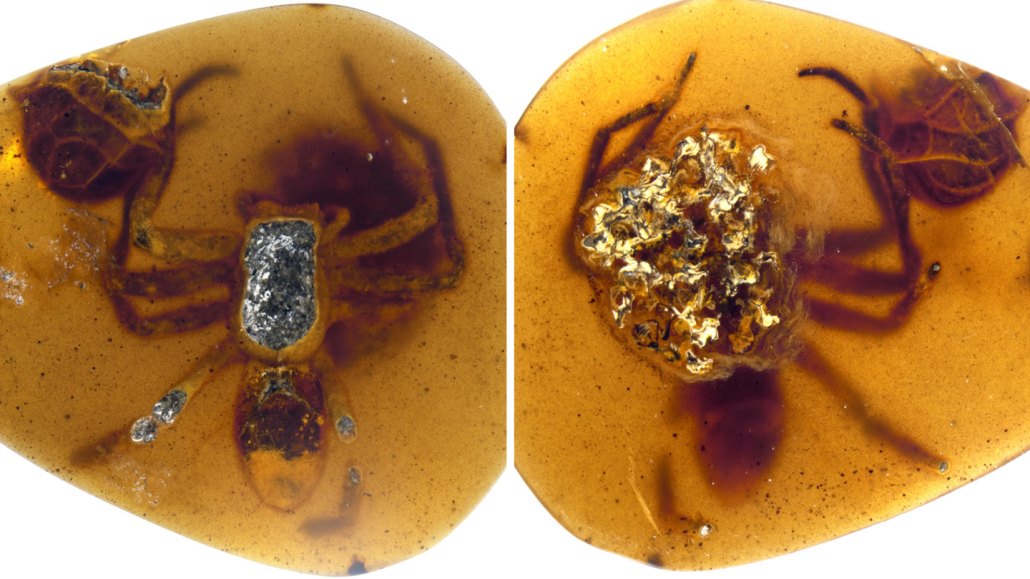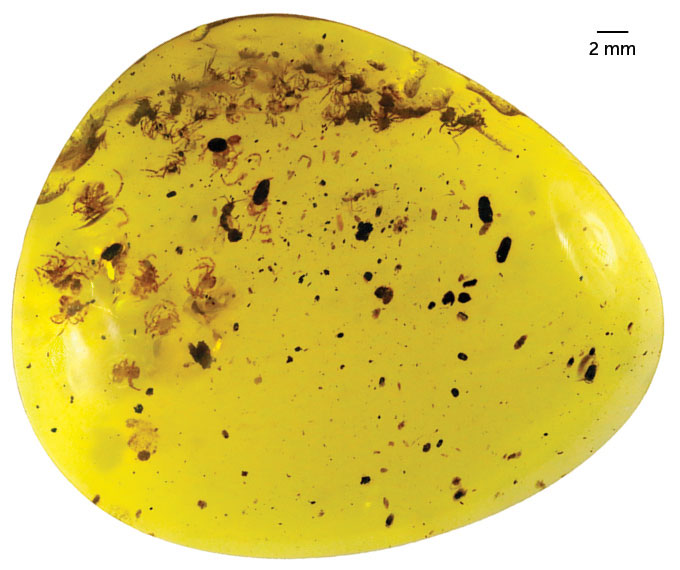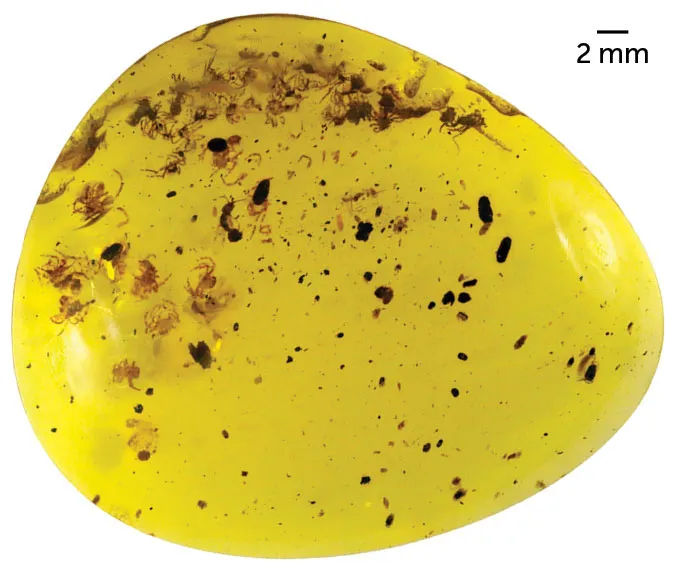This is the oldest fossil evidence of spider moms taking care of their young
A 99-million-year-old spider trapped in amber sheds light on ancient arachnid parenting

A female spider trapped in amber alongside her egg sac, seen here from above (left) and below (right), is the oldest evidence of maternal care in spiders.
Xiangbo Guo









